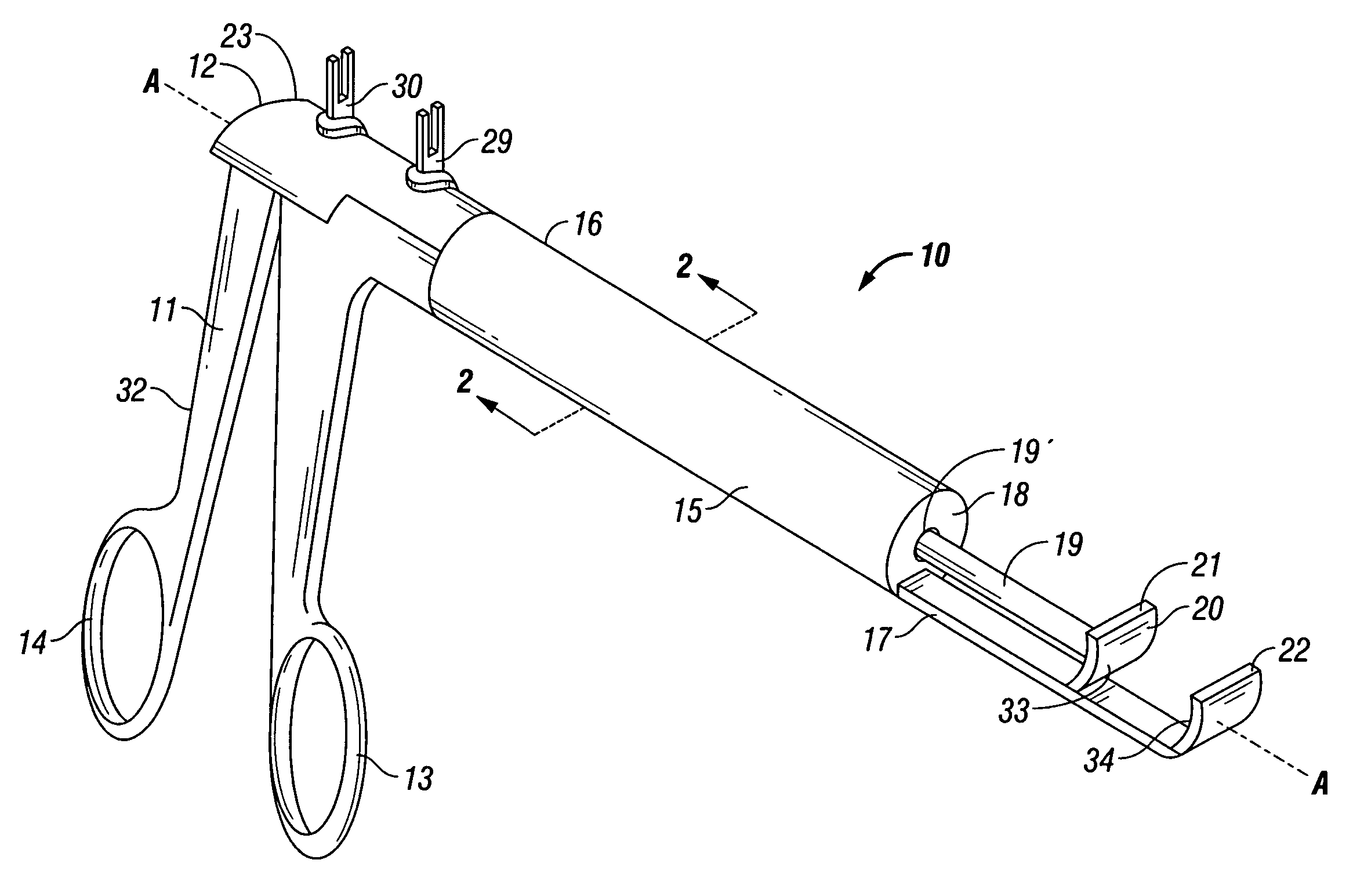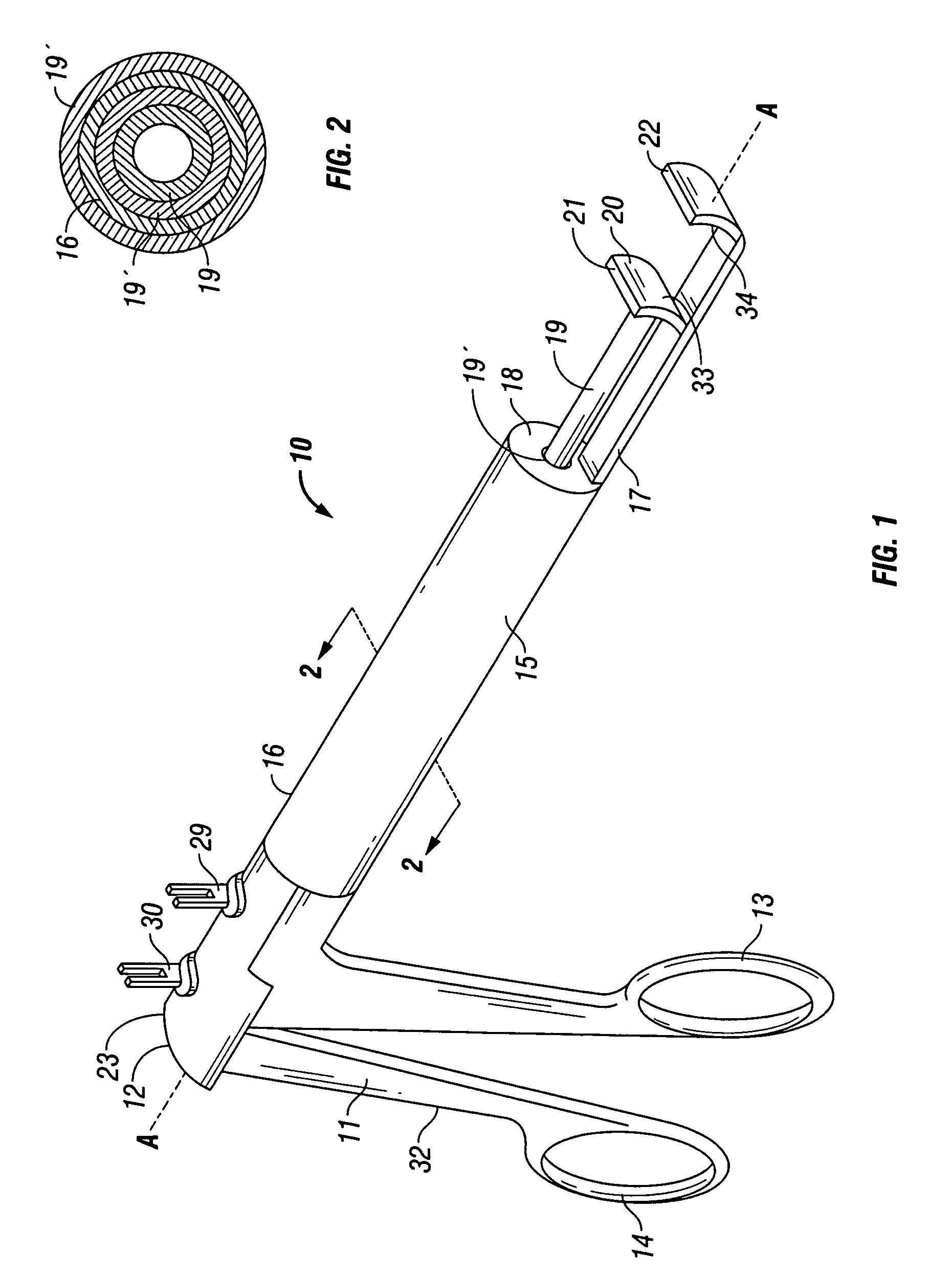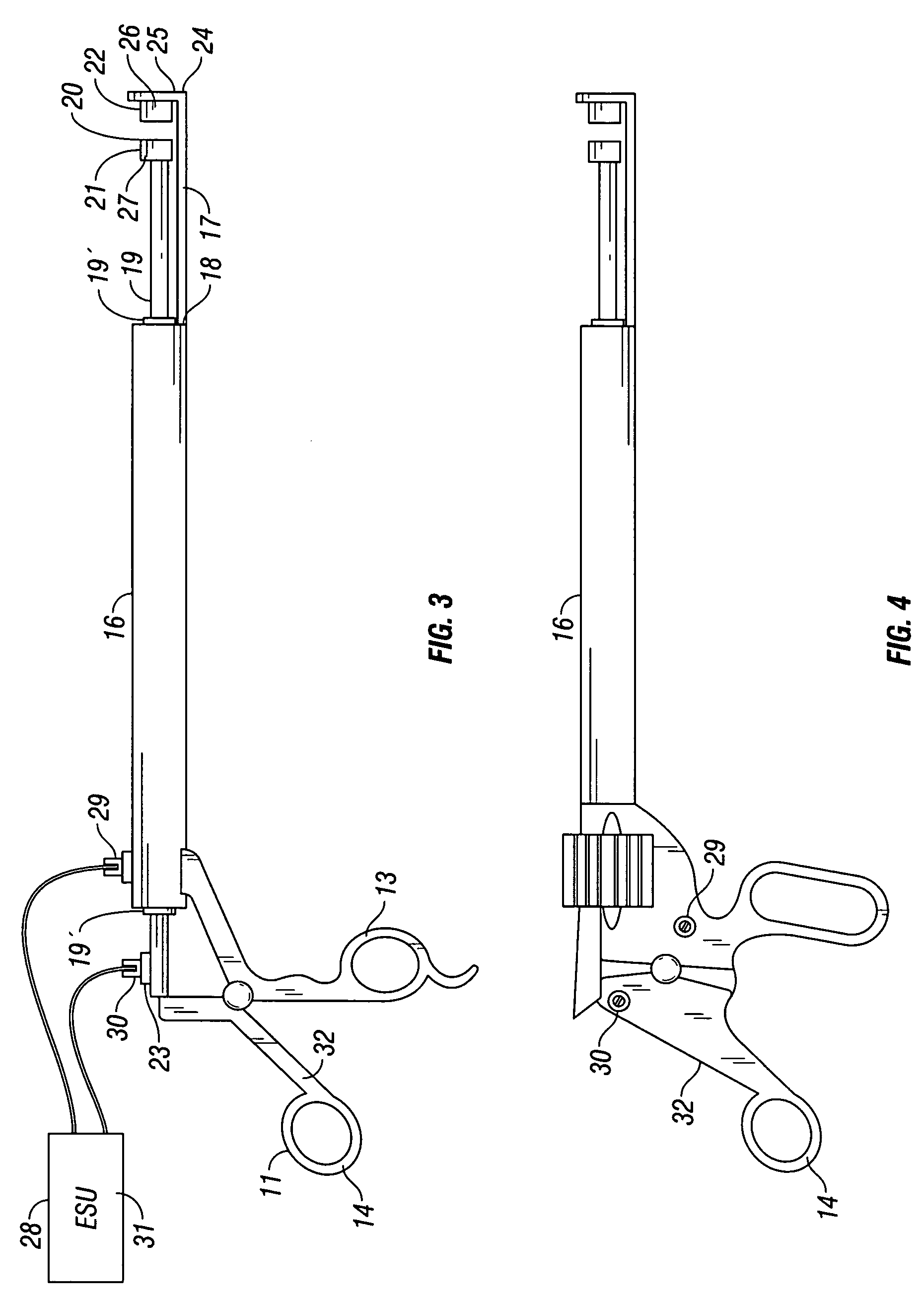Apparatus and method for sealing and cutting tissue
- Summary
- Abstract
- Description
- Claims
- Application Information
AI Technical Summary
Benefits of technology
Problems solved by technology
Method used
Image
Examples
Embodiment Construction
[0046]FIG. 1 is a perspective view of an elongate tubular bipolar tissue sealer or cutter 10 for application by a surgeon of electrosurgical energy to tissue. A handle 11, for holding and manipulation by the surgeon, is on a proximal end 12 of the elongate bipolar tissue sealer or cutter 10. The handle 11 has both first and second handle grips 13 and 14, respectively. A chassis 15, carded on the handle 11 by mechanical connection with the first handle grip 13, extends axially along axis “A” relative to the handle 11 and away from the surgeon a distance adequate to reach the patient's operative site. The chassis 15 is comprised of at least two parts. The first is an outer tube 16 which extends from the handle 11 along the axis “A.” The outer tube 16 is fixed on the chassis 15. The second part is a member or chassis extension 17 extending from a patient end 18 of the outer tube 16, also along the axis “A.” An inner tube 19 is moveable to and from the handle 11 in the preferred embodim...
PUM
 Login to View More
Login to View More Abstract
Description
Claims
Application Information
 Login to View More
Login to View More - R&D
- Intellectual Property
- Life Sciences
- Materials
- Tech Scout
- Unparalleled Data Quality
- Higher Quality Content
- 60% Fewer Hallucinations
Browse by: Latest US Patents, China's latest patents, Technical Efficacy Thesaurus, Application Domain, Technology Topic, Popular Technical Reports.
© 2025 PatSnap. All rights reserved.Legal|Privacy policy|Modern Slavery Act Transparency Statement|Sitemap|About US| Contact US: help@patsnap.com



